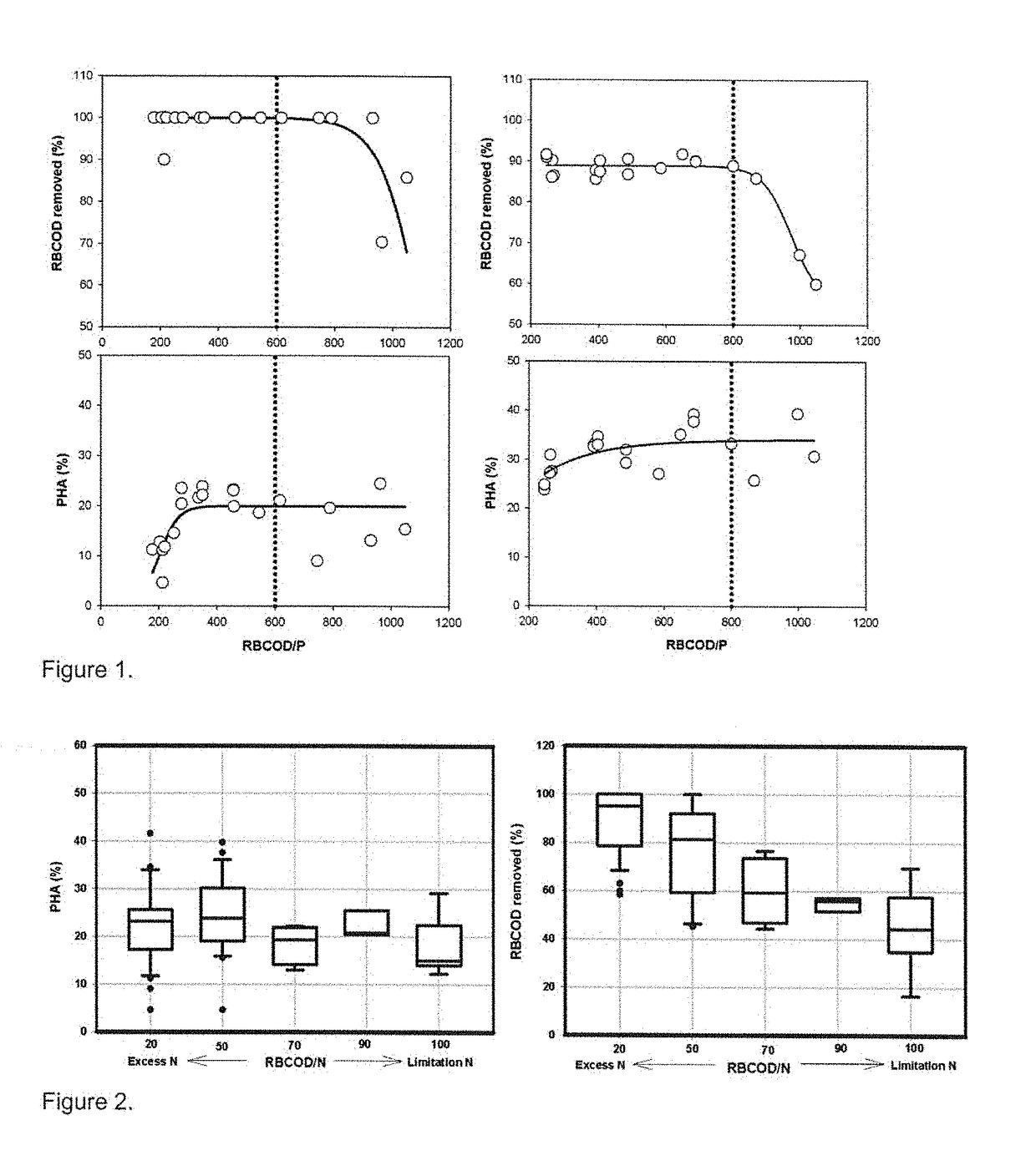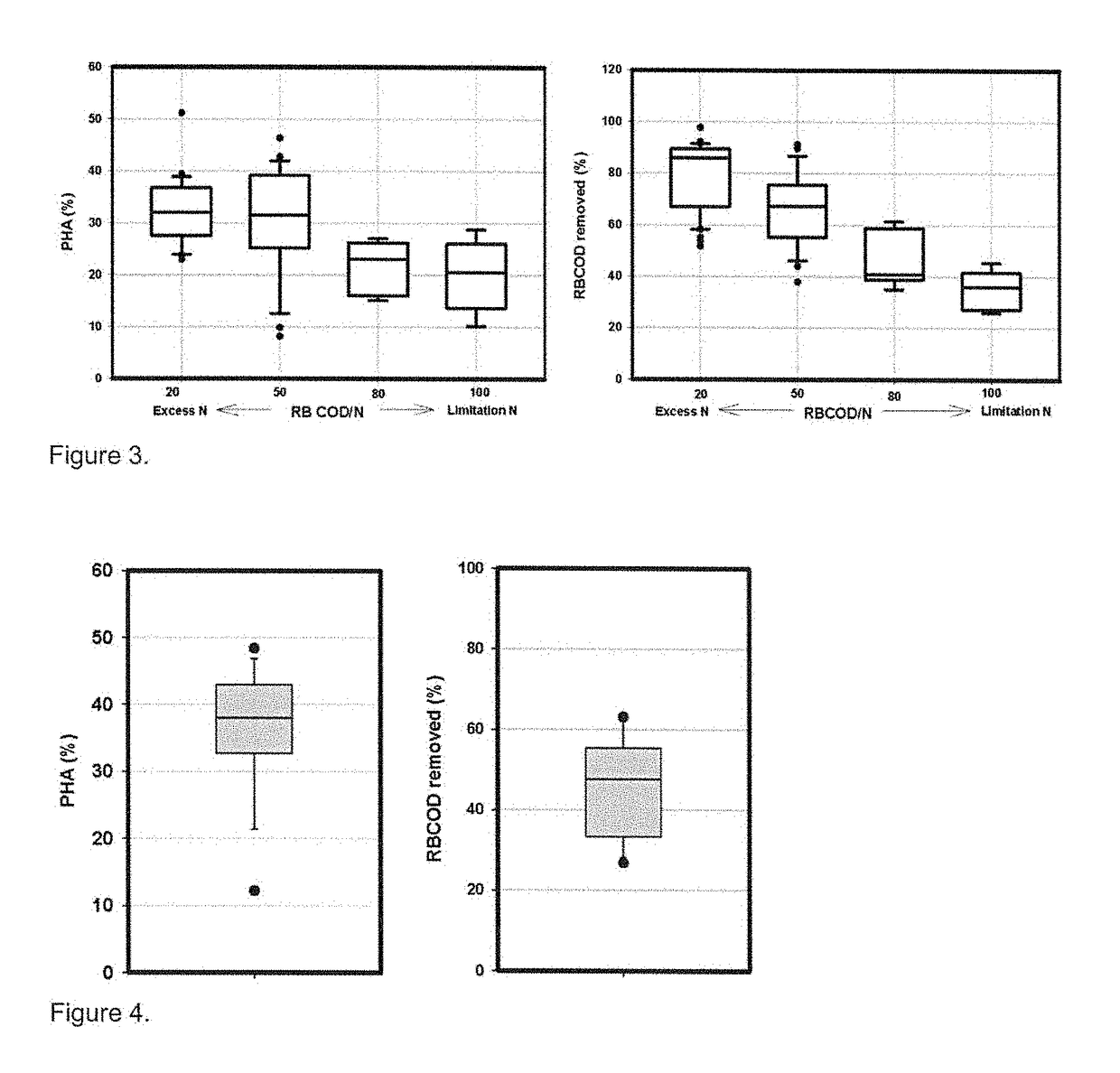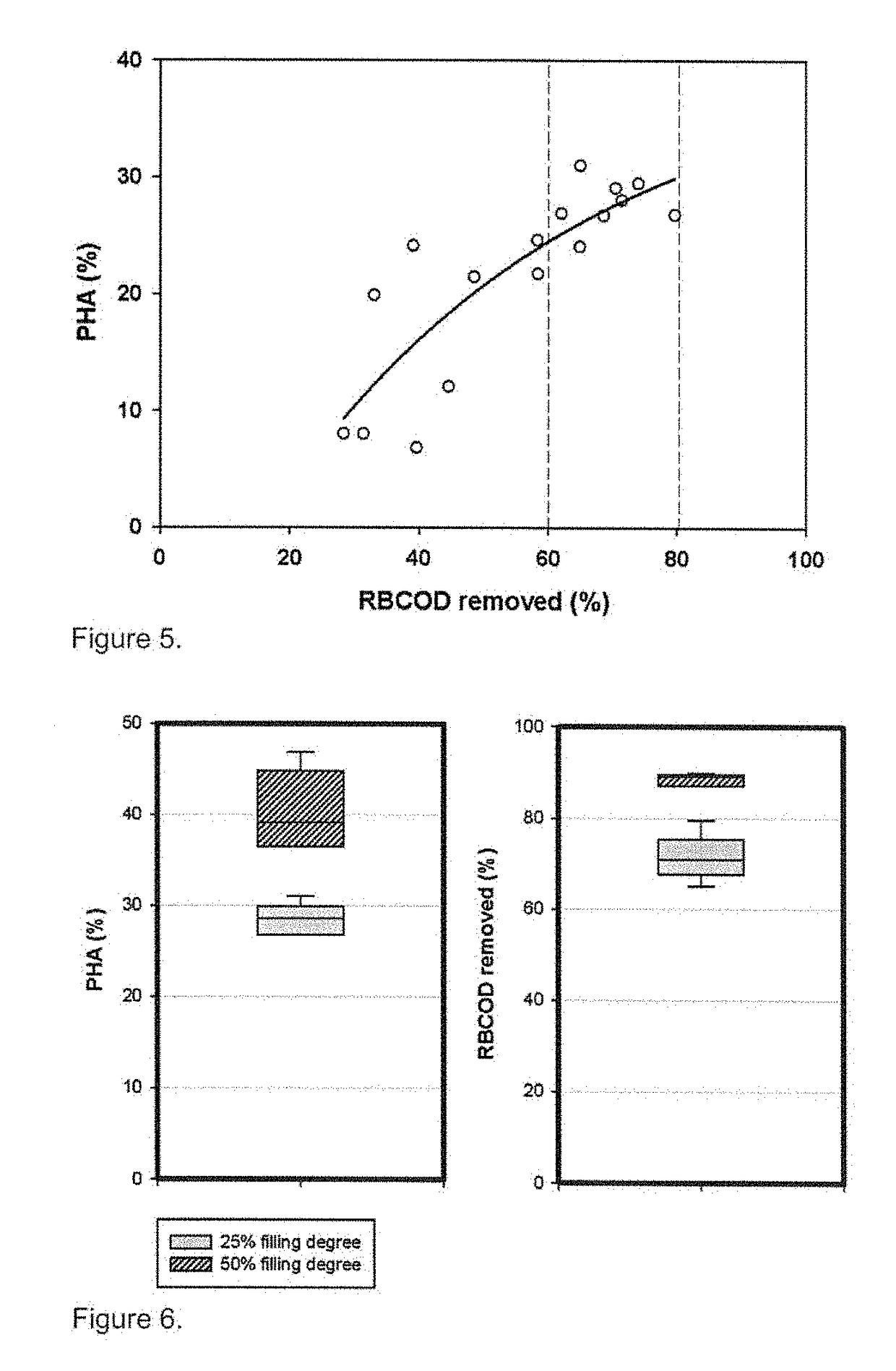Biofilm process for treating water with continuous or semi-continuous production of biomass with enhanced polyhydroxyalkanoate content
a biofilm and biomass technology, applied in the direction of water treatment compounds, water treatment parameter control, waste water treatment from plant processing, etc., can solve the problem that biomass is commonly regarded as a solid waste disposal problem, and achieve the effect of enhancing the pha content of detached or surplus biomass
- Summary
- Abstract
- Description
- Claims
- Application Information
AI Technical Summary
Benefits of technology
Problems solved by technology
Method used
Image
Examples
example 1
n of RBCOD / P and RBCOD / N on Biofilm Biomass Production and RBCOD Removal
[0096]Methods and Materials.
[0097]MBBR processes were operated in parallel at laboratory scale. Each process consisted of an aerated reactor with nominally 0.4 L working volume. The reactors were inoculated with biomass as activated sludge collected from the Lund municipal VWVTP, Sweden. Additions of bio-available forms of phosphorus (P) as KH2PO4 and nitrogen (N) as NH4Cl to the influent flow were made to adjust to selected influent organic carbon to bioavailable nutrient ratios of RBCOD / N and RBCOD / P. Trace elements were also added in order to ensure that micronutrients for the biological process were not limiting. The composition of the trace nutrient solution and additions are described elsewhere (Bengtsson, 2009, Biotechnology and Bioengineering, 104(4):698-708).
[0098]The excess biomass produced in the process was separated from the effluent and composite samples collected over 1 HRT were used for quantitat...
example 2
n of Higher Process Operating Temperature
[0110]Methods and Materials.
[0111]A laboratory scale MBBR was operated with a reference RBCOD of acetic acid. The process performance was evaluated with fixed organic load (4 g-COD / L / d), hydraulic retention time HRT (1.5 h), and volumetric filling degree of 40% with AnoxKaldnes K3 carriers. Influent nitrogen levels were on average with RBCOD / N of 50 g / g and influent RBCOD / P was 800 g / g on average. The operating temperature was controlled at a set point temperature of 50° C. The reactor was continuously operated under the selected conditions for 120 days.
[0112]Results and Discussion.
[0113]Many industries treat and, in the best of possible circumstances, reuse contaminated process waters. Recycle paper mills are a practical example where process water temperatures are generally high and there exists a general economic benefit if these process waters can be treated without need for cooling. Biological processes can select for bacteria that are s...
example 3
of Organic Carbon Limitation and Available Biofilm Biovolume
[0116]Materials and Methods.
[0117]An influent RBCOD comprising of 70% acetic acid and 30% propionic acid (COD basis) was treated in two parallel in MBBR reactors as described in previous examples. The process performance was evaluated with a fixed volumetric organic load (4 g-RBCOD / L / d), HRT (1.5 h), temperature (37° C.), and nutrient supply. Average influent RBCOD / N and RBCOD / P were 50 g / g and 700 g / g, respectively. The two MBBRs were with different volumetric filling degrees of AnoxKaldnes K5 carriers; one with 25% filling degree, and the other with 50% filling degree. The MBBRs were continuously operated and monitored over 150 days.
[0118]Results and Discussion.
[0119]The PHA production performance was assessed with respect to residual RBCOD availability in the process. When the process performance in RBCOD removal decreases, the mixed liquor biomass grows in an environment with excess readily available carbon. One may int...
PUM
| Property | Measurement | Unit |
|---|---|---|
| temperature | aaaaa | aaaaa |
| temperature | aaaaa | aaaaa |
| concentrations | aaaaa | aaaaa |
Abstract
Description
Claims
Application Information
 Login to View More
Login to View More - R&D
- Intellectual Property
- Life Sciences
- Materials
- Tech Scout
- Unparalleled Data Quality
- Higher Quality Content
- 60% Fewer Hallucinations
Browse by: Latest US Patents, China's latest patents, Technical Efficacy Thesaurus, Application Domain, Technology Topic, Popular Technical Reports.
© 2025 PatSnap. All rights reserved.Legal|Privacy policy|Modern Slavery Act Transparency Statement|Sitemap|About US| Contact US: help@patsnap.com



